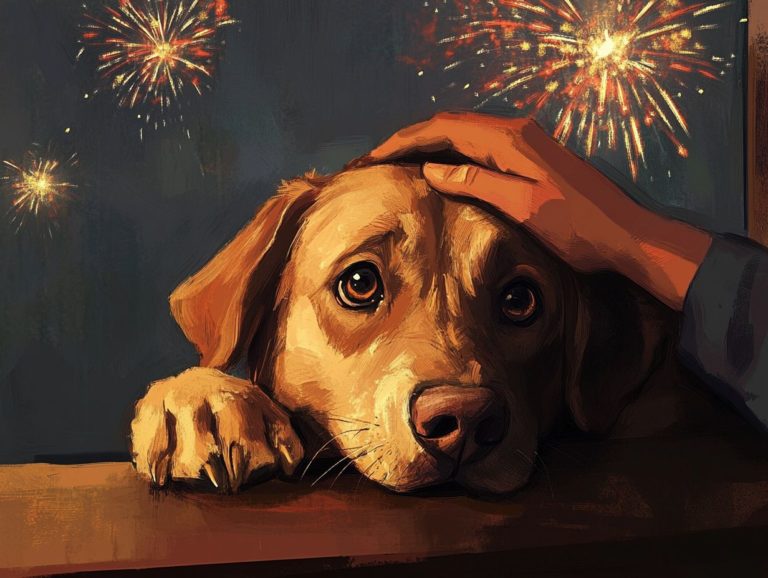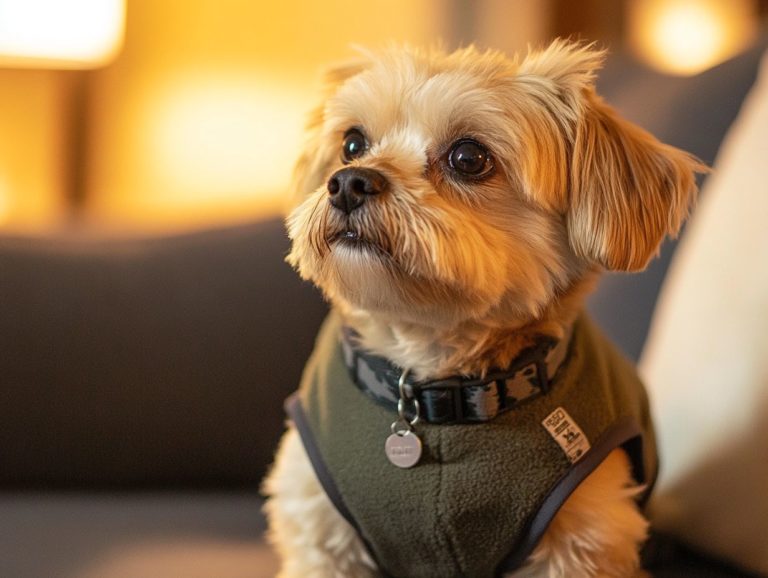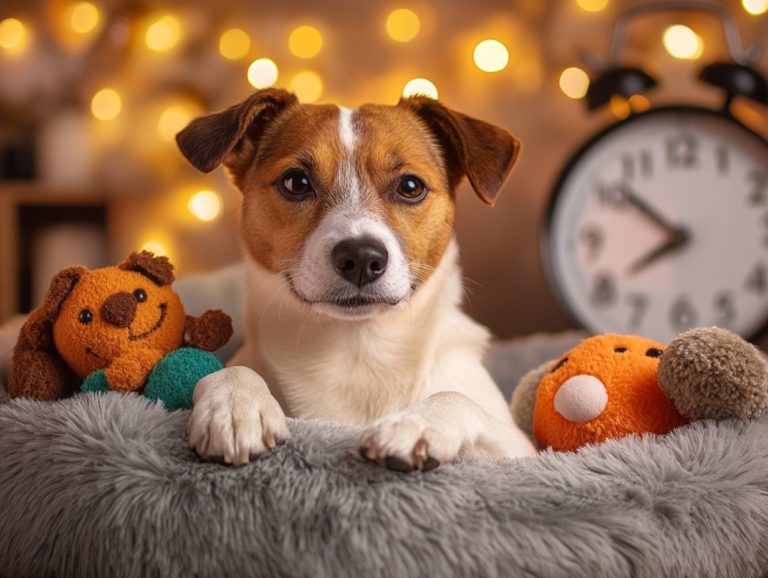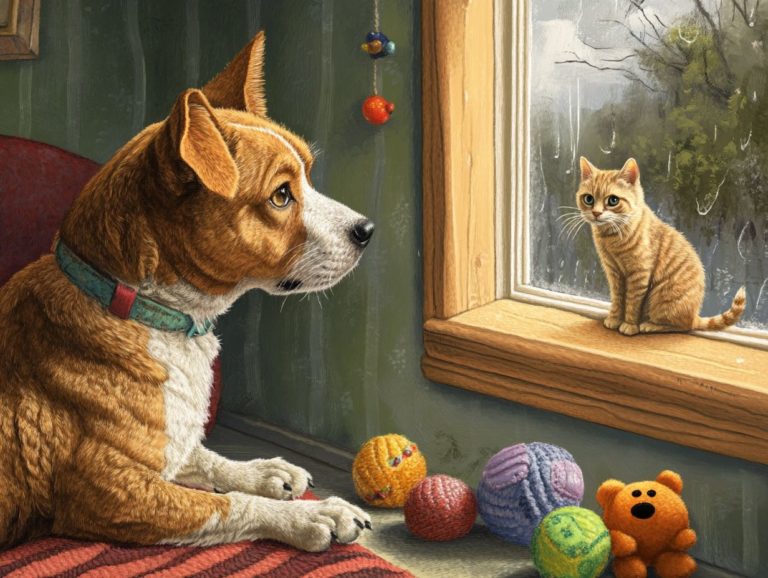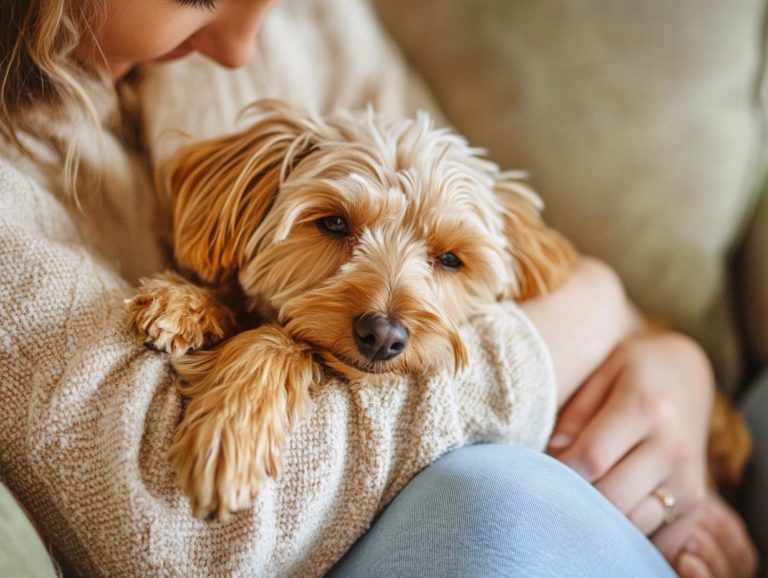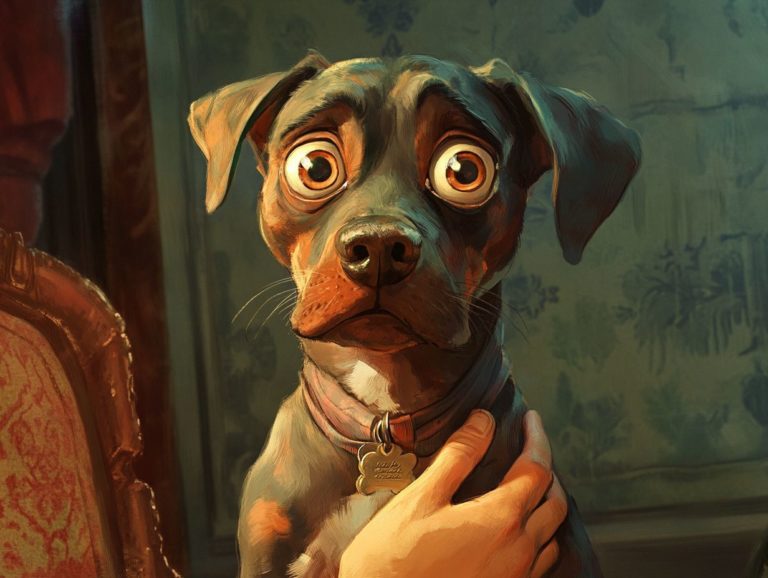What Should I Do If My Pet is Anxious During Grooming?
Dog grooming is crucial for your pet’s health. Yet, for many furry companions, it can become a source of anxiety and stress.
Recognizing the underlying reasons for this anxiety is the first step toward helping your pet feel more at ease during grooming sessions.
Let s explore why your pet might feel anxious during grooming and how you can help them stay calm! This article covers the causes and signs of grooming-related anxiety, effective techniques such as positive reinforcement, gradual exposure, and calming methods. You ll also find tips for creating a soothing grooming environment.
Moreover, it highlights when to seek professional groomers or veterinarians. Your pet deserves a serene grooming experience, and this guide will equip you with the tools to achieve just that.
Contents
- Key Takeaways:
- Understanding Pet Anxiety During Grooming
- How to Help Your Pet Overcome Grooming Anxiety
- When to Seek Professional Help
- Tips for a Stress-Free Grooming Experience
- Frequently Asked Questions
- What Should I Do If My Pet is Anxious During Grooming?
- What are some signs that my pet is anxious during grooming?
- How can I prepare my pet for grooming to prevent anxiety?
- Can I stay with my pet during grooming to help with their anxiety?
- What techniques do groomers use to calm anxious pets?
- Should I consider sedation for my pet if they are very anxious during grooming?
Key Takeaways:
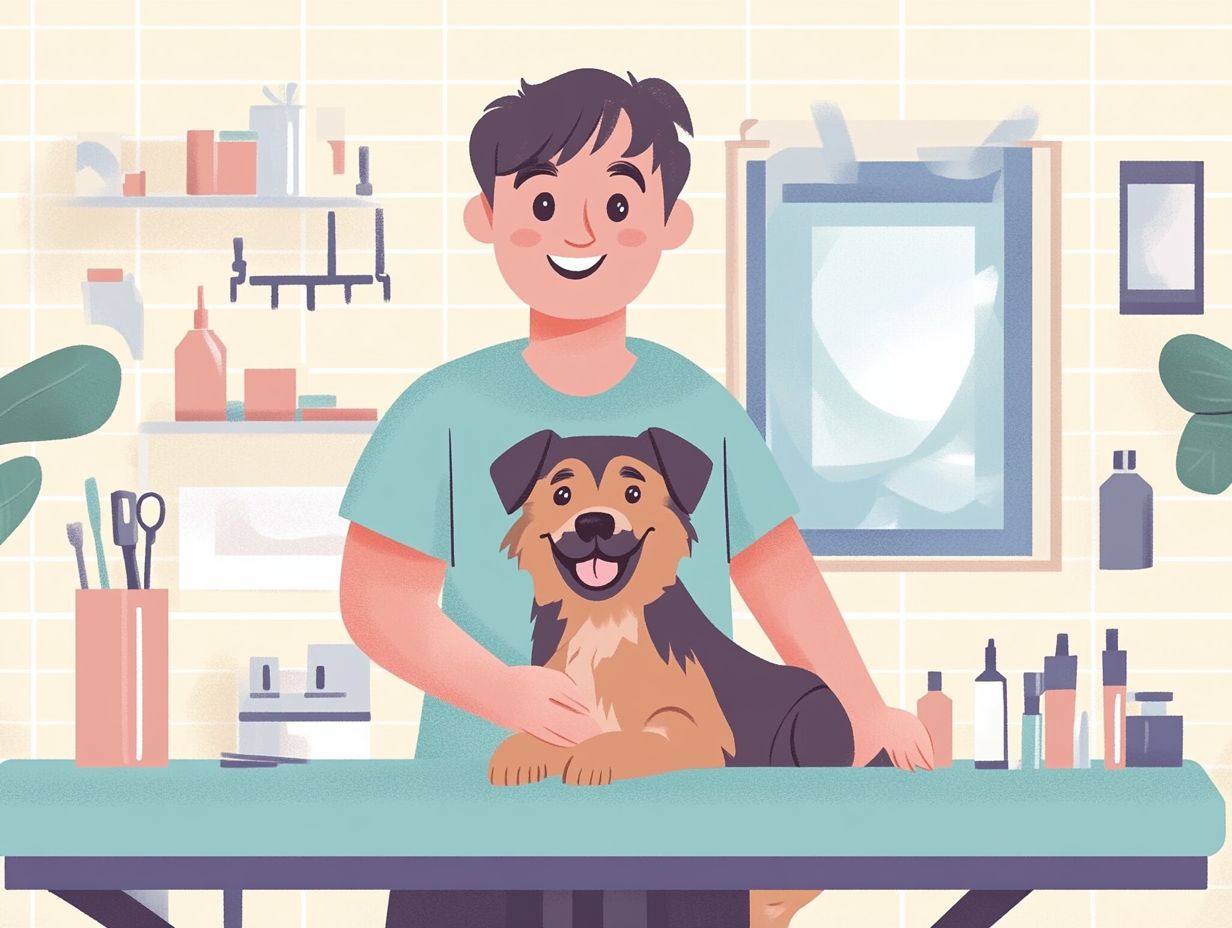
- Act now! Observe your pet for signs of anxiety to help them feel secure.
- Use positive reinforcement techniques and gradual exposure to help your pet overcome grooming anxiety.
- Seek professional help if your pet shows severe anxiety. Follow tips such as creating a calming environment and choosing the right groomer for a stress-free experience.
Understanding Pet Anxiety During Grooming
Understanding pet anxiety during grooming is essential for dog owners who wish to create a positive grooming routine that reduces stress for their beloved companions. Many pets experience this anxiety, often due to past negative experiences, unfamiliar tools, or the atmosphere of a grooming salon.
By recognizing the sources of anxiety, you can take proactive steps to alleviate stress. Working with professional groomers and using effective dog training techniques will help ensure your dog remains calm during grooming sessions, making the experience pleasant for both your pet and the groomer.
Causes of Anxiety
Several factors contribute to grooming anxiety in pets, and it s essential to consider them. Prior negative experiences can linger in their minds, while physical discomfort from matted fur can worsen their stress.
If your pet hasn t gotten used to specific grooming tools like clippers or scissors, they may feel anxious around them. Unfamiliar sounds from these tools can create an unsettling atmosphere, especially if your pet hasn t been gradually exposed to such noises.
Physical discomfort can amplify anxiety, particularly in pets with matted fur that tugs at their skin. To ease some of this stress, engaging your pet in exercise before a grooming session can help release pent-up energy.
Preparing your pet for visits to the groomer by fostering positive associations and gradually introducing grooming tools can significantly reduce their anxiety and make the experience better for everyone involved.
Signs of Anxiety in Pets
Recognizing the signs of anxiety during grooming can vastly improve your pet s experience and overall well-being. Look for common indicators of anxious behavior, such as excessive panting, drooling, attempts to escape, or even signs of aggression.
Also, be aware of subtle changes like a lowered tail, flattened ears, or restless movements that might indicate discomfort. Understanding these cues allows you to adapt your grooming methods, perhaps by introducing breaks or offering gentle reassurances to ease their stress.
Implementing calming techniques, such as playing soothing music or using pheromone diffusers which help create a tranquil environment can be beneficial.
When you take the time to understand and soothe your pet, grooming can turn into a joyful bonding experience!
How to Help Your Pet Overcome Grooming Anxiety
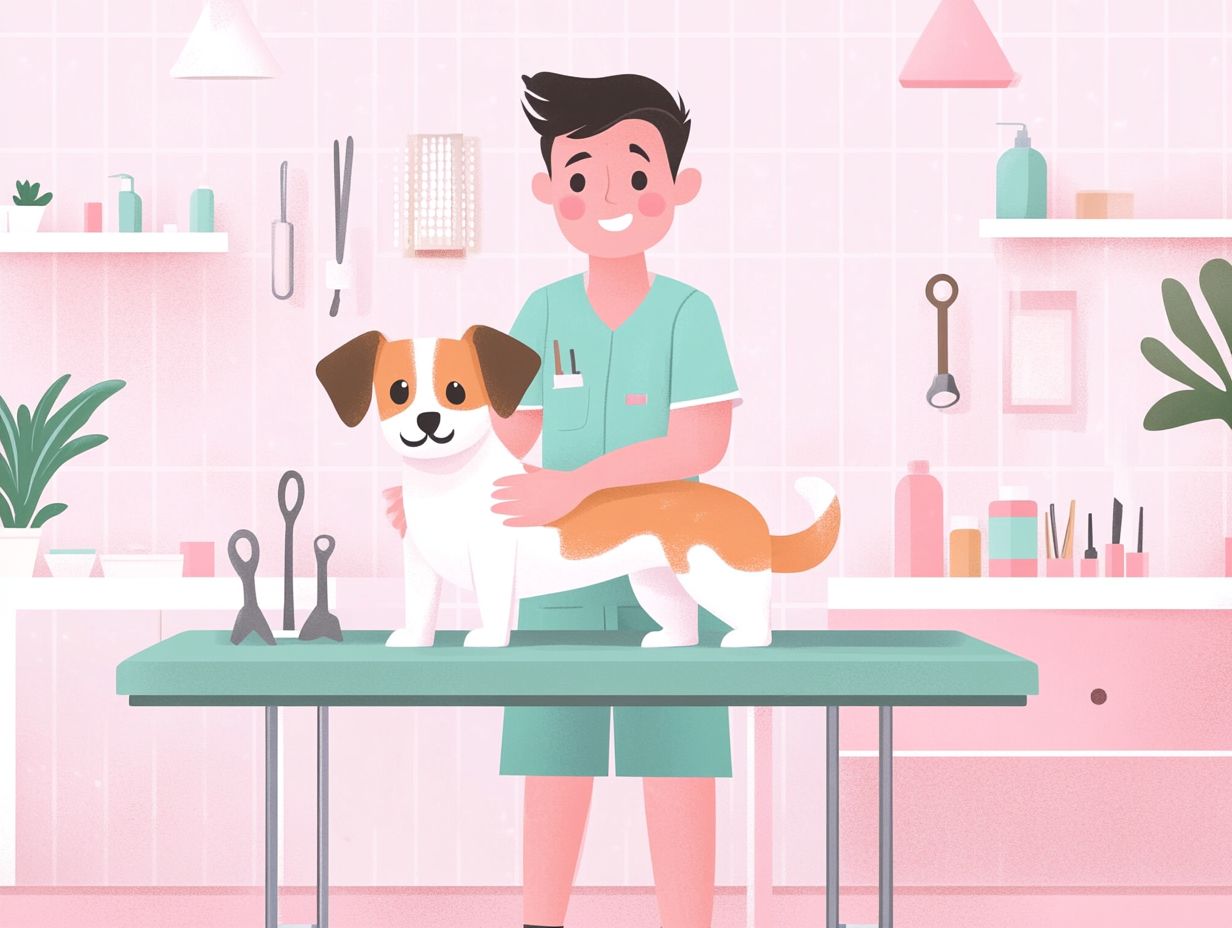
Helping your pet conquer grooming anxiety involves a thoughtful blend of positive reinforcement techniques, gradual desensitization, and effective training strategies. By creating a calm and reassuring environment, you can significantly alleviate your pet’s anxiety during grooming sessions.
When your pet remains calm, rewarding them with treats and praise reinforces that positive behavior. Gradually introducing grooming tools and routines allows for familiarization and builds confidence. This ultimately transforms the grooming experience into a more positive and enjoyable process for both you and your beloved companion.
Positive Reinforcement Techniques
Positive reinforcement techniques are crucial for training your dog to be calm and easing any grooming anxiety they may have. By rewarding desirable behaviors with treats and praise, you can help your pet associate grooming with positive experiences. This will ultimately reduce their fear and anxiety during the process.
For example, offering a small treat every time your dog remains still while being brushed can foster a favorable connection with grooming. Verbal praise, like enthusiastically saying, “good boy/girl,” can further reinforce calm behavior.
Start with short grooming sessions and gradually increase their length as your dog becomes more comfortable. Over time, these positive experiences not only enhance your dog’s ability to stay calm during grooming but also strengthen the bond between you.
This approach builds trust and makes future grooming tasks significantly easier and more enjoyable for both of you.
Gradual Exposure and Desensitization
Gradual exposure and desensitization are incredibly effective techniques for helping your anxious pets feel more at ease with grooming tools and the entire grooming process. By slowly introducing your pet to various grooming items like clippers and brushes in a controlled environment, you can significantly reduce their anxiety and help build their confidence.
- Start with familiarization: Allow your pet to see and sniff the grooming tools without any pressure.
- Once they re comfortable, engage in brief, non-threatening interactions. For instance, let them feel the vibrations of the clippers while they re turned off or gently brush their fur with a soft brush.
Throughout this process, it s essential to maintain a calm atmosphere. Use soothing voices and treats to reinforce positive associations. Consistency is crucial; regular, short sessions yield better results than infrequent, lengthy encounters. Incorporating calming techniques, such as deep breathing and gentle petting, not only eases your pet’s tension but also enhances the bonding experience during this gradual acclimatization.
When to Seek Professional Help
Understanding when to seek professional assistance is essential for dog owners managing anxious pets. If grooming anxiety escalates to the point of aggressive behavior or significant distress during the grooming process, don t wait; it s a great idea to consult professional groomers or veterinarians.
They can offer valuable insights on the use of sedation medications such as diazepam or acepromazine for particularly anxious pets, ensuring a safer and more comfortable grooming experience.
Identifying Severe Anxiety in Pets
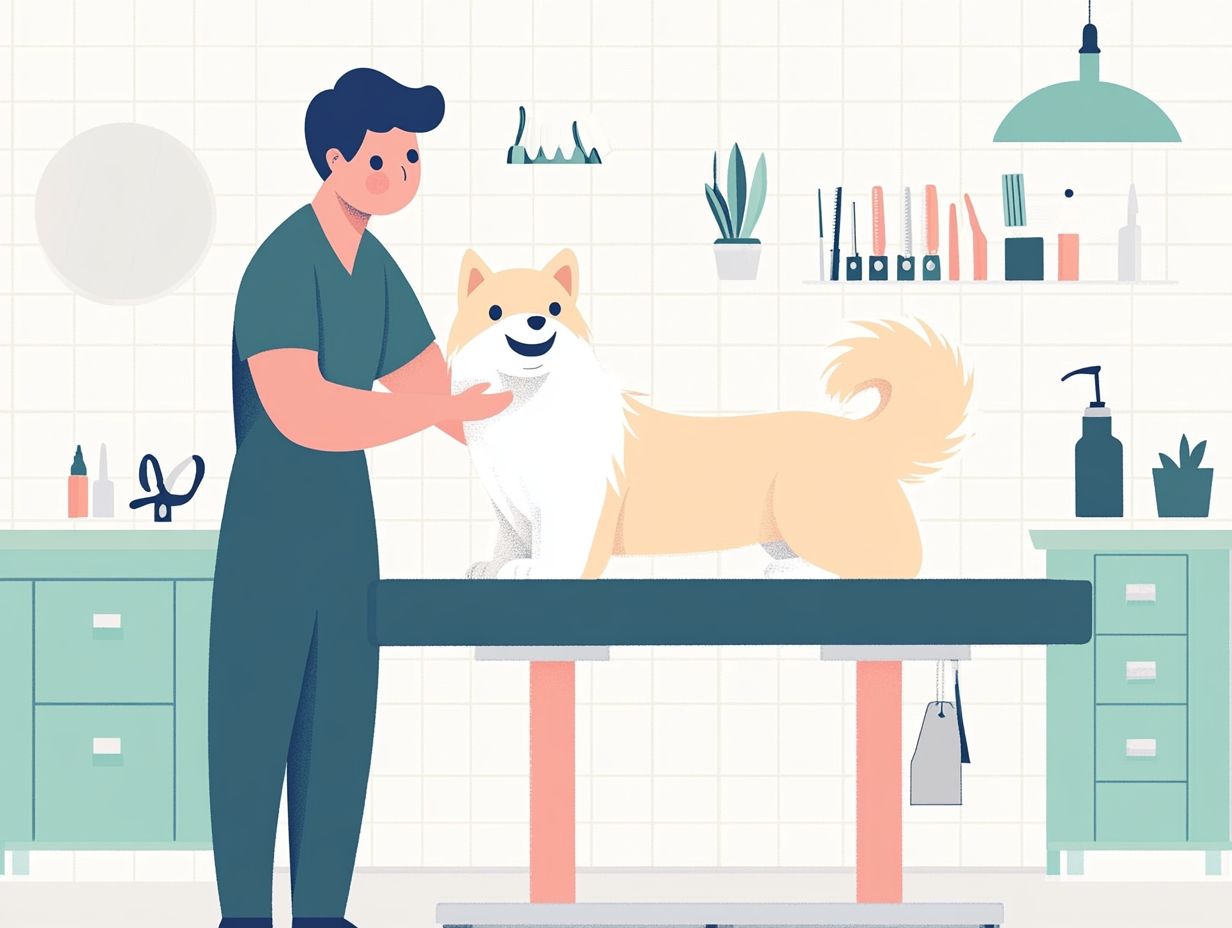
Identifying severe anxiety in pets is essential for ensuring their safety and well-being during grooming. Look for signs such as excessive barking, aggression, attempts to escape, and physical indicators of distress.
You might also notice behaviors like panting, trembling, or hiding, which signal that your pet feels overwhelmed or fearful. These symptoms can lead to injuries and can intensify their anxiety over time.
Timely intervention is crucial; the sooner you recognize these signs, the better the chances of alleviating your pet’s stress. Professional groomers trained in methods to help your pet relax and behavior management play a critical role. They create a safe and supportive environment, helping pets gradually acclimate to grooming.
Groomers can tailor each session to your pet’s specific needs, ensuring a much more positive experience overall.
Tips for a Stress-Free Grooming Experience
Creating a stress-free grooming experience for your pet starts with a soothing environment and choosing a groomer who understands your furry companion’s needs.
As a dog owner, it s crucial to pay attention to the ambiance of the grooming salon and the techniques used by the groomers. This thoughtful approach ensures your pet feels safe and comfortable throughout the entire grooming process.
Creating a Calming Environment
A calming environment reduces grooming anxiety in pets. You can use calming techniques like lavender essential oil or a synthetic pheromone diffuser to create a soothing atmosphere during grooming sessions.
Playing soft, soothing music can significantly enhance tranquility and help pets feel more secure. The gentle melodies distract them from the grooming process and lower their stress levels.
Integrating dog appeasing pheromones mimics natural scents that bring comfort to canine companions, fostering a sense of safety. These strategies work together, crafting a serene grooming experience that benefits both your pet and makes your task easier.
Choosing the Right Groomer
Choosing the right groomer is a vital step in ensuring your dog has a positive grooming experience, especially if they tend to be anxious. Consider their approach to handling nervous pets, the range of services offered, and whether mobile grooming suits your dog.
Assessing their experience and techniques for calming anxious pets can truly make a difference in easing your furry friend’s nerves. Seek groomers who provide a variety of services beyond just haircuts such as baths, nail trimming, and ear cleaning.
Furthermore, mobile grooming can offer a less stressful environment, allowing for a more personalized and convenient experience, particularly for dogs that may feel overwhelmed in traditional salons.
Ultimately, maintaining open communication with the groomer is essential. Discussing your dog’s temperament and preferences allows for a tailored approach, contributing to a successful grooming session.
Frequently Asked Questions
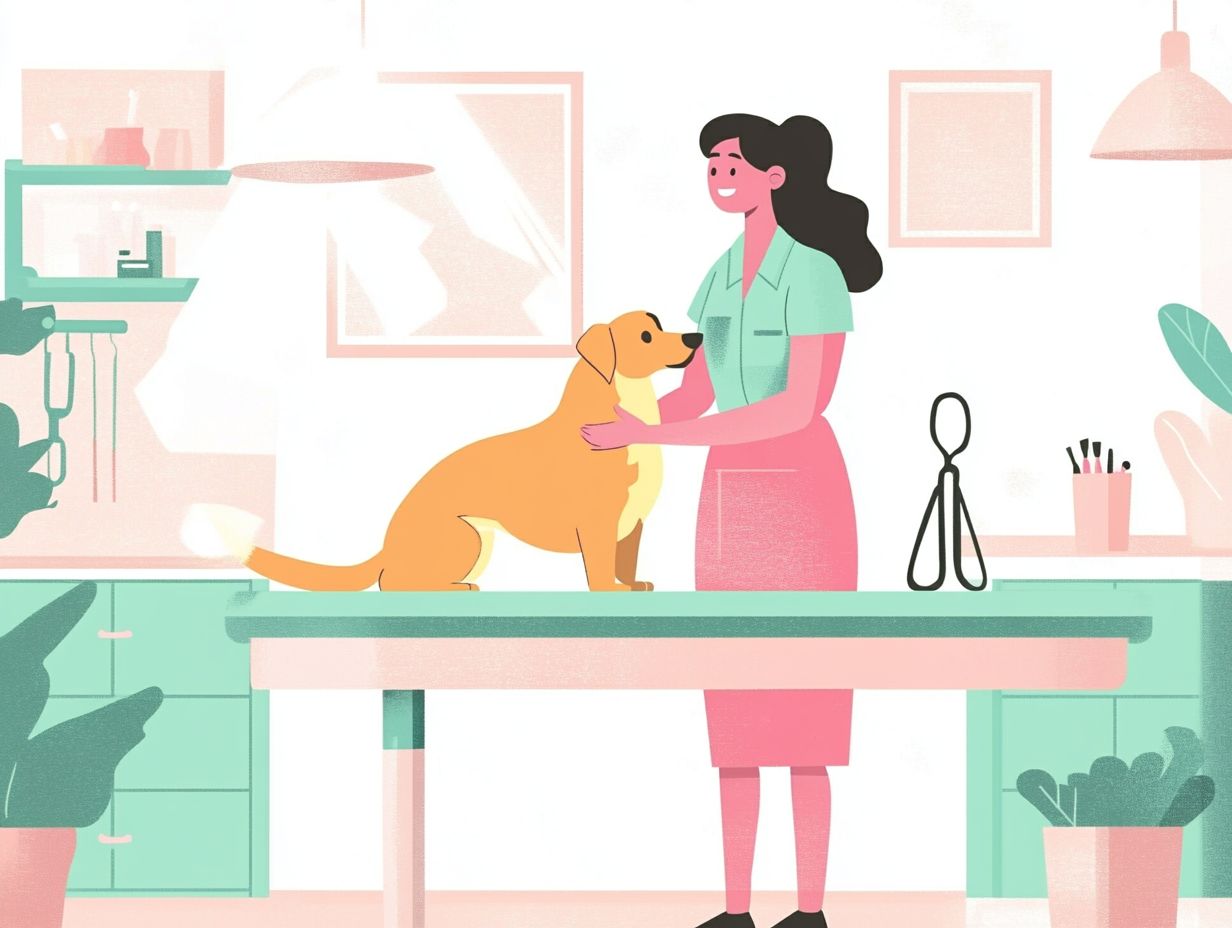
What Should I Do If My Pet is Anxious During Grooming?
Worried about your pet’s anxiety during grooming? Here’s how you can help! Keep them calm and comfortable by using soothing techniques and maintaining a peaceful environment. For more insights, check out what you should know about therapy for anxious pets.
What are some signs that my pet is anxious during grooming?
Signs of anxiety in pets during grooming include trembling, panting, whining, attempting to escape, or becoming aggressive.
How can I prepare my pet for grooming to prevent anxiety?
To prepare your pet for grooming, it’s important to start getting them used to handling and grooming at a young age. This can help prevent anxiety in the future.
Try these tips today and give your pet the calm grooming experience they deserve!
Can I stay with my pet during grooming to help with their anxiety?
Some groomers may let you stay with your pet. However, it’s often better to trust the professionals as your presence might increase their anxiety.
What techniques do groomers use to calm anxious pets?
Groomers use calming music and gentle handling to make pets feel secure.
They also provide treats to distract and reward your pet.
Should I consider sedation for my pet if they are very anxious during grooming?
Sedation should be a last resort and only done with a vet’s guidance.
First, try other calming techniques and find out what triggers your pet’s anxiety.

